On April 7, 2025, the science world received one of the most amazing announcements ever. American genetic engineering company, Colossal Biosciences Inc., announced the success of its hard-fought attempt at bringing extinct animals back to life. It had completed “the world’s first de-extinction,” which they achieved with a species of dogs called the dire wolves.
Dire wolves are just one of the growing lists of animal species that have become extinct over the years. The dire wolf shares the extinction list with the legendary dinosaurs, the carnivorous Australian marsupial Thylacine (also known as the Tasmanian Tiger), and the massive elephant species, the Woolly Mammoth.
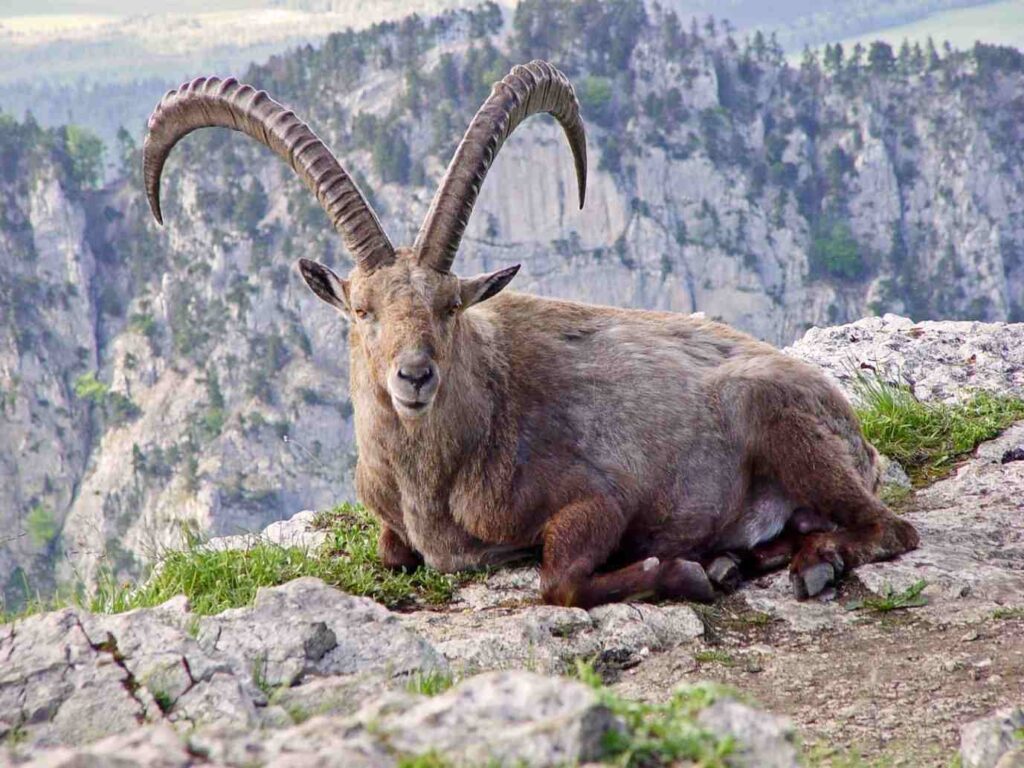
Dire wolves were massive dogs that were 25% bigger than the gray wolf. The sight of these dogs sent shivers down the spines of horses and bison in the American plains. Not to mention their large and dangerous teeth.
Paleontologist Joseph Leidy came up with the name in 1858 after discovering the animal’s bones. He took the name “dire” from the animal’s Latin name, Canis (Aenocyon) Dirus, specifically from “dirus,” which means “fearsome.”
For more than 12,500 years, humans have given up hope of ever seeing these dogs. All that remains of these animals are skeletal structures preserved in museums around the world.
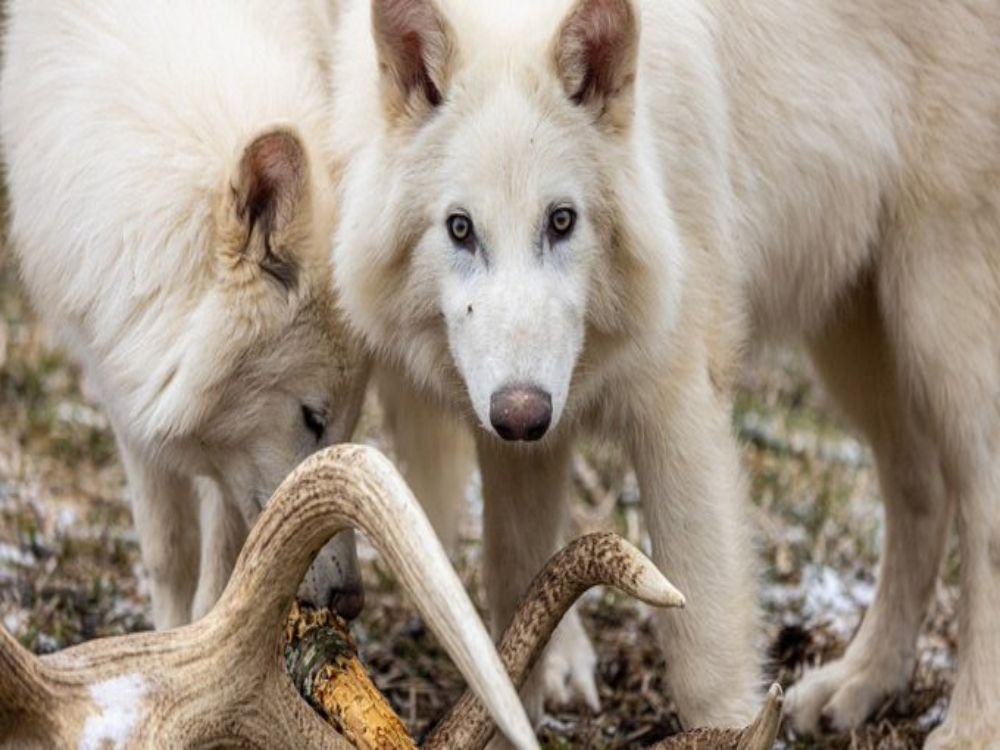
Aside from that, old photos, movie recreations, and drawings of these species have been some of our only reminders that they once walked on this same earth. But it wasn’t until they appeared in the popular George R.R. Martin’s fantasy novels and their movie adaptation, “Game of Thrones,” that they caught the world’s attention.
The HBO TV series was what introduced millions of people to the fascinating creature. Their impeccably white appearance and muscular frame created a longing in the hearts of many viewers to see this long-extinct animal in reality. Many suspect that this was the consideration that influenced the choice of the dire wolf as Colossal Biosciences’ first de-extinction project.
The Intervention of De-extinction Technology
A hundred years ago, the idea of bringing extinct animals back into existence would have drawn strong skepticism and even mockery. But that’s no longer the case. Thanks to the tenacity of some of the world’s most brilliant scientists and the ever-surging advancement in scientific technology, de-extinction is now a reality.
Through reproductive cloning and selective breeding technology, we can now rewrite history and reunite with our long-lost animal species. One of the brightest glimmers of hope appeared in the 1990s with the discovery of the somatic cell nuclear transfer (SCNT).

This discovery led to the cloning of Dolly, a female Finn Dorset sheep. Dolly, which was the first adult mammal to be cloned, lived from 1996 to 2003. Her cloning was achieved by a group of British scientists led by biologist Ian Wilmut. The team announced the breakthrough in February 1997.
Before that, cloning an adult mammal was widely considered impossible. Before then, clones were only generated in the lab and were only done for lower species, such as frogs. To produce Dolly, the scientists worked on the DNA of an adult mammary gland cell. This resulted in an animal with functional organs such as a heart, brain, and even liver.
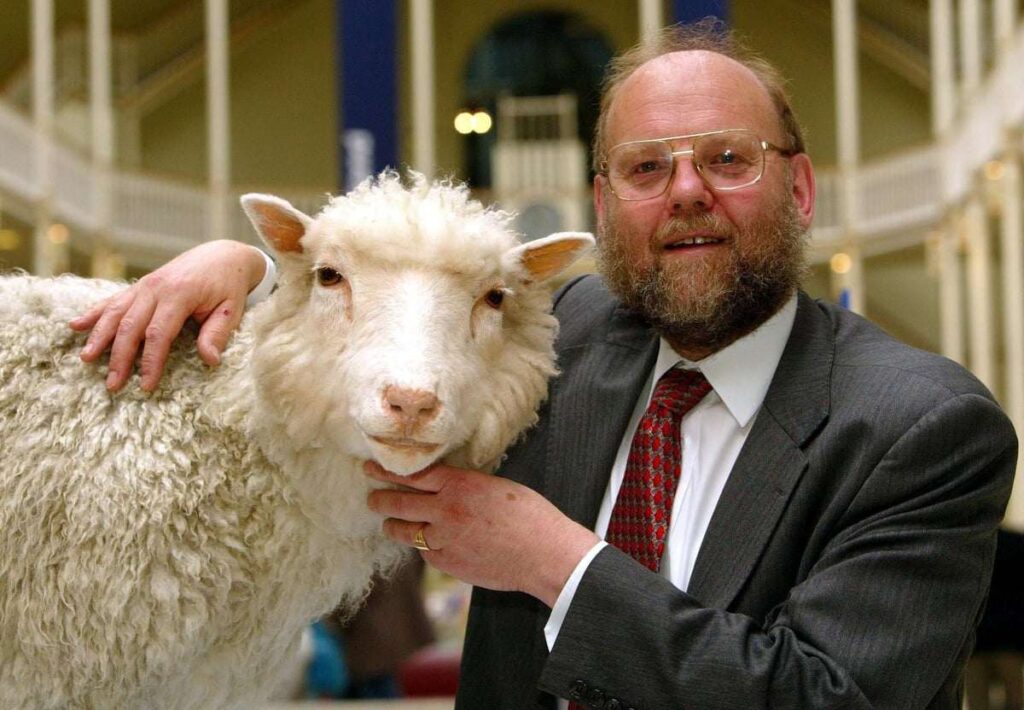
Cloning begins with taking samples of tissue from the animal’s remains. The scientists then isolate a single cell to extract the DNA-containing cell nucleus. Thereafter, they insert this nucleus into an ovum from which they had previously removed its nucleus.
After replacing the ovum’s nucleus with the new one from the donor animal, the ovum develops into an embryo. The embryo is then implanted into the womb of a surrogate animal to develop into a duplicate of the donor animal.

In 2009, scientists came close to de-extinction for the first time. They tried to return the Pyrenean Ibex, a species of wild goat that was previously found in the mountains of Asia, Northeast Africa, and Europe. But the clone they produced didn’t survive for more than a few minutes.
This breakthrough then sparked more hope and curiosity in the scientific world. Scientists began to consider a number of extinct animals to determine the best candidates for a cloning project.
Most notably, the woolly mammoth, the passenger pigeon, and the Tasmanian tiger (also known as the thylacine) were on the list. Dinosaurs weren’t in the picture due to the very old age of their specimens and the degradation of their DNA samples.
Scientists explored a de-extinction technique known as back-breeding. Back breeding is a form of selective breeding that tries to trace species from modern ones to those of their ancestors. Lately, the ability to analyze DNA from the hair, bones, and other tissues of deceased animals has provided a boost to de-extinction efforts.
One of the biggest breakthroughs in de-extinction efforts is the discovery of CRISPR (clustered regularly interspaced short palindromic repeats). CRISPR is a naturally occurring enzyme system. It edits DNA in several organisms, thereby providing an easier path in de-extinction efforts. CRISPR is a major improvement on synthetic de-extinction methods.
De-extincting the Dire Wolf
Unlike cloning, the de-extinction of the dire wolf was less invasive. The team from Colossal Biosciences took cells from the donor animal’s blood instead of a tissue sample.
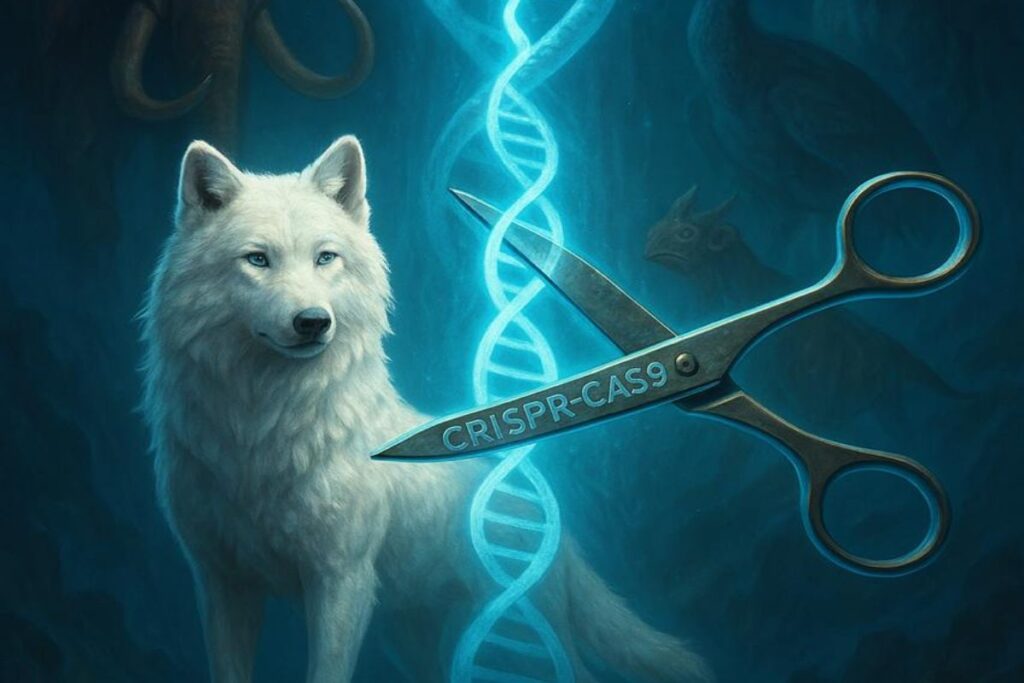
They then edited the 14 most relevant genes in the cell’s nucleus. Afterward, the genes resembled those of the dire wolf. They then transferred the edited genes into an ovum whose nucleus had been removed in preparation for the process. The resulting embryos were then introduced into the womb of two surrogates.
On October 1, 2024, two dire wolf pups were born. The scientists named them Romulus and Remus after the founders of Rome, who, according to Roman legend, were raised by wolves. The scientists repeated the process with another batch of embryos and a different surrogate dog.
On January 20, 2025, another dire wolf was born. They named this one Khaleesi – a Game of Thrones-inspired name. The three wolves were deliberately born by cesarean section to avoid the risk of natural birthing complications.
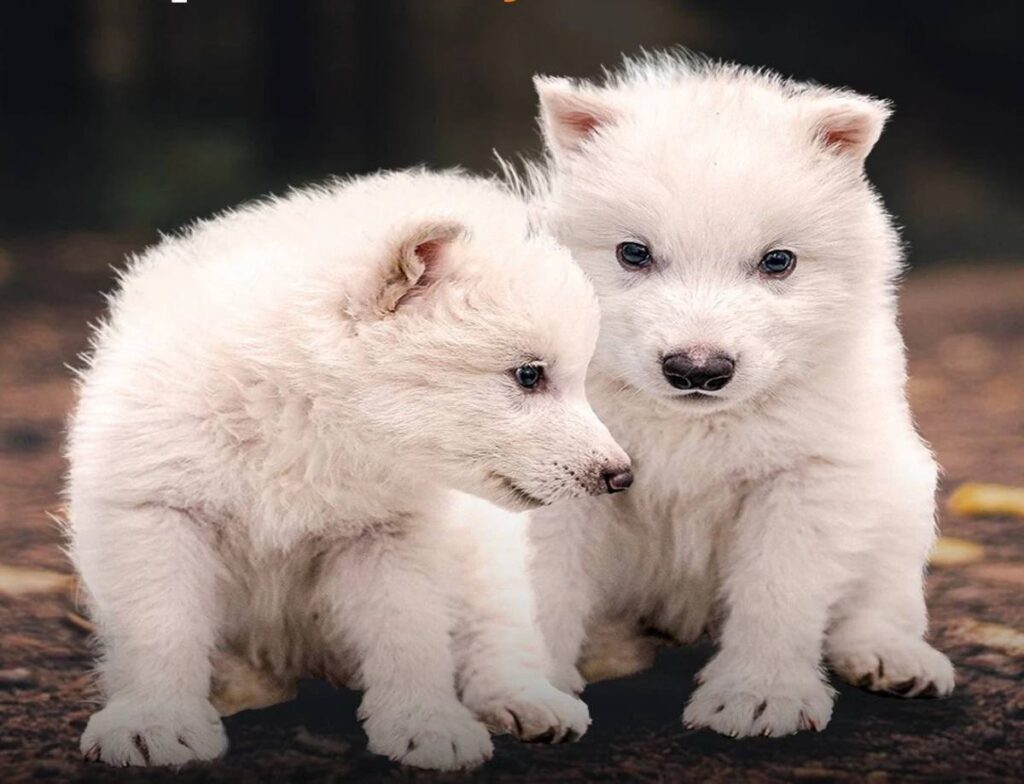
They have been living on a 2,000-acre Colossal Biosciences facility, whose location has been kept secret for safety reasons. The animals receive special attention from a team of veterinary doctors throughout the day.
The dire wolves are like any other species of dog. However, the relatively larger snowy-white canines have set themselves apart with their gracious movements and carefree behavior in the presence of their human friends.
Yet, they don’t like anyone to come too close. They have exhibited introverted behavior, withdrawing into themselves whenever someone comes too close. Interestingly, this “someone” included everybody, even their handlers.
The dire wolves have remained under close observation. “We haven’t seen them attempt to hunt any live prey,” said Paige McNicle, one of the top staff members of Colossal Biosciences. Fingers remain crossed to see how well and how long they will live.
Ethical Considerations of De-Extinction
No doubt, the recent successes of de-extinction efforts are exciting. But beyond the thrill, there are some concerns that are worthy of consideration. First, rewriting history has its pros and cons. As we recover lost species, let’s also note the reasons why some of these animals went out of circulation in the first place.

One of the major reasons for extinction is the loss of habitat. As optimistic as we want to be about the environment, it’s going to be almost impossible to revive the natural homes of these animals. These natural habitats have either been lost or drastically altered.
Resurrecting these extinct species will put them in a state of continuous danger until their habitat are reclaimed.
Secondly, there is the issue of sustainability in terms of resources. It would require very sophisticated or even some near-miraculous conservation to create those habitats that have been lost for hundreds of years. This kind of comprehensive operation will require hundreds of millions of dollars to pull off.
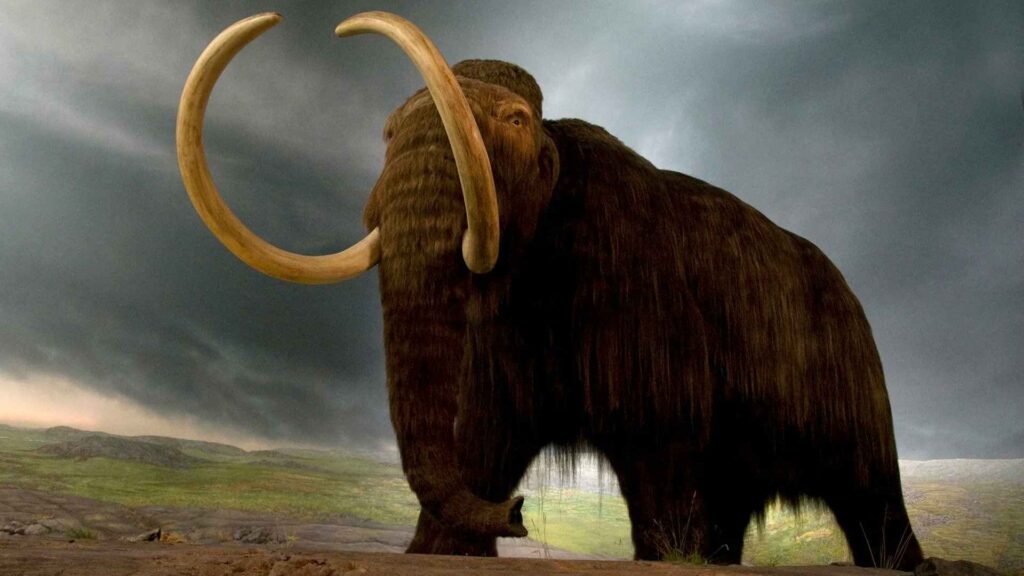
This need could create a vacuum for opportunistic moneybags. These potential donors could exploit the need for their financial interests.
Thirdly, there is every possibility that de-extinction efforts could become more advanced. It is so advanced that humans could relax their drive to conserve existing species. De-extinction could encourage extinction simply because we have found the antidote.
Lastly, there are worries about the health of recovered species. How capable are these cloned animals of surviving through the prevailing environmental conditions, which have become significantly different from what they used to be in the past?

